Everyone likes to have thick, lustrous hair which has a main role in your looks and beauty. Hair fall is something that disturbs everyone. When the rate of hair falls exceeds the normal limit and when it is not supported by proper re-growth thinning of hair occurs. According to Ayurveda a person with Vata constitution may have dark, dry and coarse hair while a person with Pita constitution may have light brown, blonde hair which is prone to premature graying and thinning. A person with Kapha constitution will have thick and shiny hair.
CAUSES OF HAIR FALL
A diet devoid of adequate vitamins and minerals it will affect the health of your hair. Make sure to include plenty of leafy vegetables, fruits and milk products in your diet. Prolonged use of chemical products may damage your hair. Try using natural herbal products. Stress and tension may lead to hair loss. Involve in activities that reduce stress and provide relaxation. Accumulation of digestive toxins may inhibit the nutrients from reaching the cells. So proper flushing of toxins from the body should be ensured. Lack of sleep may also lead to abnormal hair fall. Try to get 6 to 8 hours of sleep. Prolonged use of driers may damage the hair. Never comb wet hair. Always use wide toothed comb to remove the tangles.
Natural and herbal home remedies to prevent hair fall and promote hair growth.
Massage your scalp using a mixture of warm coconut and castor oil for about 15 minutes. Leave it for one or two hours. Wash it off using an herbal shampoo.
Regular application of oils which contain the goodness of amla, arnica, bhrigaraj, henna etc improves hair growth.
Apply the paste made of soaked fenugreek mixed with some lemon juice on the scalp and hair. Leave it for 15 to 20 minutes. Wash it with cold water.
Applying the sap of aloe stimulates hair growth and gives a cooling effect.
Crush few amlas and leave it in a cup of milk for few hours. Apply it on scalp and hair. Rinse it off after 15 to 20 minutes. It improves the texture of hair.
Add neem leaves to boiling water. Strain it and cool it. Wash the hair with it.
Mix almond oil with the juice of extracted from amla. Apply it regularly on scalp and gently massage with your finger tips for 15 minutes.
Apply juice of bhringaraj and amla on the scalp. Do this two to three times a week.
Mix henna powder with amla and lemon juice. Apply it on scalp and hair. Wash it after 20 minutes.
Use herbal shampoo made of hibiscus leaves, aloe and tulsi.
Use reetha (Sapindus Mukorossi) instead of shampoo as a cleanser.
Ways to reduce dandruff
Mix camphor in coconut oil and store in a bottle. Gently massage this oil on scalp before going to bed. Leave it overnight. Wash it off the next morning using herbal shampoo made of hibiscus leaves or shikkakai.
Mix some lemon juice to coconut milk and apply it on the scalp. Wash it after 10 to 15 minutes.
Apply a paste of black gram and green gram on the scalp.
Apply a paste made of mustard.
Herbal remedies for premature graying.
Mix henna powder, Amla juice and coffee powder in a bowl. Leave it for few hours. Later apply it on the scalp and wash it after 20 minutes.
Boil tea leaves in water. Wash the hair with it after cooling.
Apply the juice of brahmi and Bhringaraj.
Homemade herbal hair oils to promote hair growth.
Hibiscus, Bhringaraj oil.
Ingredients
5 to 6 Hibiscus flower, 100 grams of Aloe Vera, Henna and Bhringaraj, half liter Coconut oil
Preparation
Cut the herbs into small pieces or make a paste out of it. Put it in a pan. Add coconut oil. Boil it. When it starts boiling add Hibiscus flowers. Boil till the oil gets a deep green color and fumes start to come. Add few rice grains or corn. If they are popping the oil is done. Strain it after cooling. Store it in a bottle.
Regular application of this oil stimulates hair growth and checks hair fall.
Amla and coconut oil
Coarsely grind 15 to 20 Amlas, some curry leaves and henna. Mix it with half liter of coconut oil. Boil the mixture in a pan till the oil turns dark green and the dirt accumulates at the bottom. Strain the oil after cooling and store in a bottle. Regular use of this oil helps to reduce hair fall and premature graying. It also promotes hair growth.
Besides these many ayurvedic herbal oils are available it the market. One such example is neelibringadi thailam.
Bringraj or Eclipta alba is well known for its ability to promote hair growth and to check hair fall. It is a main ingredient in many ayurvedic and herbal hair oils. Neelibhingadi tailam is a ayurvedic herbal oil which has bhingaraj and neeliamari or Indigofera tinctora as the main ingredients. Besides these it also contain other herbs like Bacopa monnieri or brahmi, Cardiospermm halicacabum or valli uzhinja, Amla, Centella asiatica and coconut oil. Application of this oil promotes hair growth and prevents dandruff and premature graying and hair fall. It also provides a soothing effect. It is also useful in cases of sleeplessness and headache.
Yet another Ayurvedic hair oil which effectively promotes hair growth is Brahmi Amla hair oil. In this oil the main ingredients are Brahmi and Amla prepared either in coconut or gingely oil. This oil promotes the growth of lustrous hair and relieves dryness and dandruff.
In general external as well as internal nourishment is essential for healthy lustrous hair.

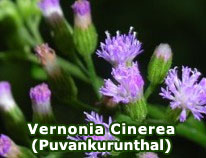
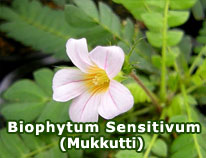
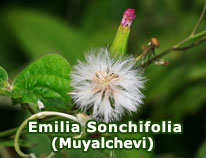
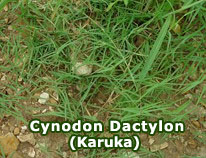
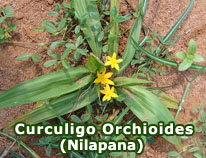
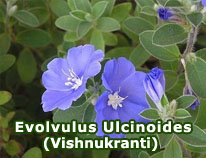
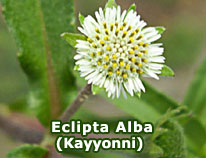
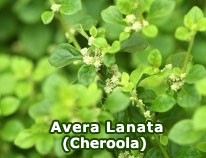
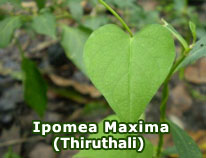
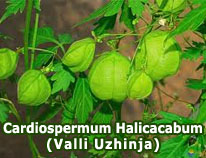

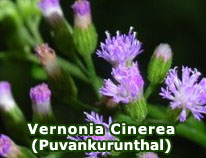
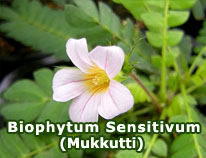
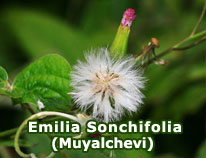
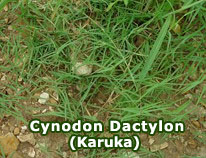
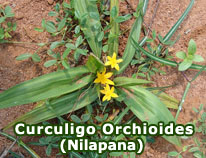
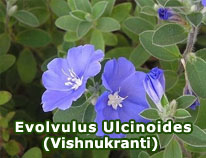
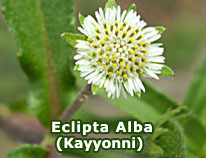
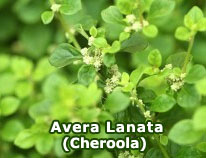
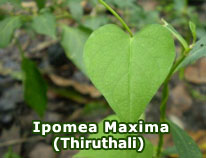
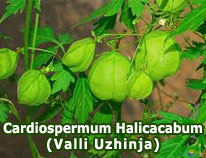
 Loading ...
Loading ...






